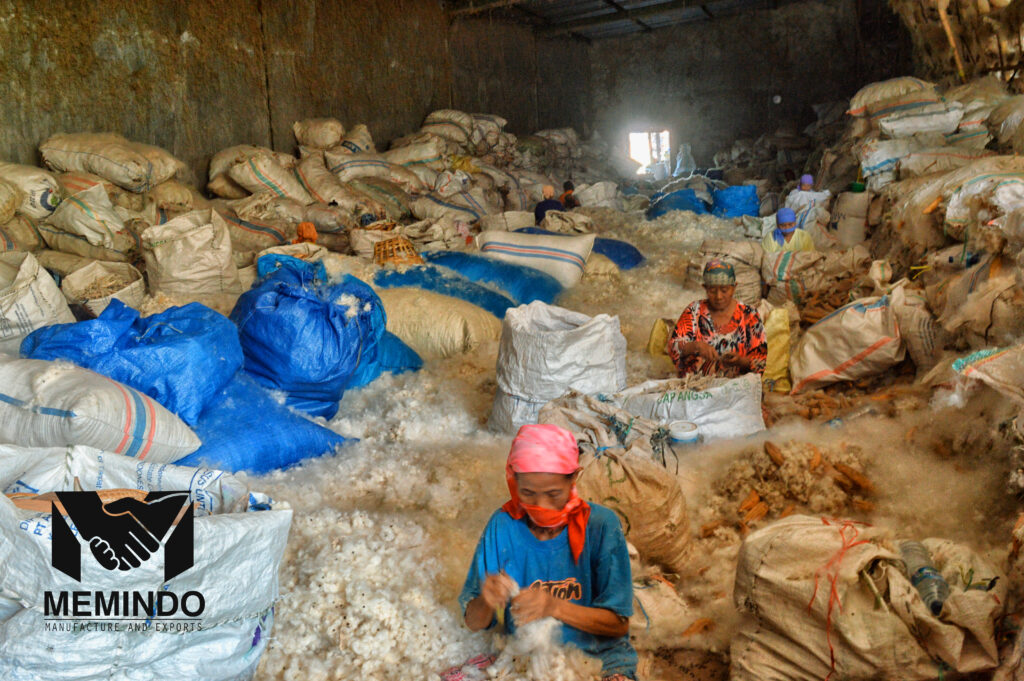Kapok: A Sustainable Natural Fiber and How to Cultivate It
Kapok, derived from the seed pods of the Ceiba pentandra tree, is a versatile, eco-friendly fiber that has been used for centuries in various industries. Often used in pillows, mattresses, and insulation, kapok is known for its lightweight, hypoallergenic, and water-resistant properties. Recently, kapok has seen a resurgence as industries search for sustainable alternatives to synthetic materials. This article will explore the benefits of kapok and how to cultivate this valuable resource.
What is Kapok?
Kapok fiber is a natural material that comes from the seed pods of the kapok tree, also known as the silk-cotton tree. The fibers are light, buoyant, and have excellent insulation properties, making them ideal for a wide range of uses. Kapok is often compared to down for its softness but has the added benefit of being hypoallergenic and resistant to moisture.
Historically, kapok was widely used for stuffing pillows, mattresses, and life vests. Today, it is being rediscovered as a sustainable material for eco-friendly products such as biodegradable packaging, soundproofing, and even bio-composites.
The Benefits of Kapok
- Eco-Friendly: Kapok is a renewable resource that can be harvested without harming the tree. The fibers are biodegradable and require minimal processing.
- Lightweight and Buoyant: The hollow structure of kapok fibers makes them exceptionally light and buoyant, perfect for use in flotation devices.
- Hypoallergenic: Kapok is naturally resistant to dust mites, making it a great option for people with allergies.
- Sustainable Alternative: As industries shift away from synthetic materials, kapok offers a natural alternative with much lower environmental impact.

How to Cultivate Kapok
Kapok trees thrive in tropical climates and can be found across Southeast Asia, Africa, and parts of Central and South America. Cultivating kapok requires a tropical environment with high humidity and well-drained soil. Below are the steps involved in growing kapok:
1. Climate and Location
Kapok trees grow best in tropical climates with temperatures ranging from 25°C to 35°C. They need a substantial amount of rainfall, typically between 1,000 to 2,500 mm annually, and are often found in regions with distinct wet and dry seasons. The trees prefer well-drained soil but can tolerate a range of soil types.
2. Planting Kapok Trees
Kapok trees can grow from seeds or saplings. If planting from seeds:
- Seed Preparation: Kapok seeds should be soaked in water for 24 hours to promote germination.
- Soil Preparation: The soil should be loosened and cleared of any debris to encourage root growth.
- Spacing: Trees should be spaced around 8-10 meters apart, as they can grow to a height of 30-70 meters.
3. Maintenance and Care
- Watering: While kapok trees are relatively drought-tolerant once established, young trees need regular watering, especially during dry periods.
- Pruning: Minimal pruning is needed, but removing dead or damaged branches can promote healthier growth.
- Pest Management: Kapok trees are generally resilient but can occasionally face threats from pests like caterpillars or fungal diseases. Organic pesticides can be used to control infestations.
4. Harvesting Kapok
Kapok trees typically start producing seed pods after 3 to 5 years. The seed pods mature in the dry season and can be harvested once they turn brown and start to split open.
- Manual Harvesting: The seed pods are collected by hand or with the help of poles. It’s important to time the harvest before the pods split fully, as this can result in loss of fibers.
- Processing: After harvesting, the fibers are separated from the seeds. Traditionally, this is done manually, but modern machinery can also assist in the extraction process. Once separated, the kapok fibers are dried and cleaned, making them ready for commercial use.
Kapok’s Role in Sustainable Agriculture
Kapok cultivation is not only beneficial for producing sustainable fibers but also contributes to reforestation and environmental conservation efforts. Since kapok trees are native to tropical forests, cultivating them helps maintain biodiversity and supports ecosystems that are crucial for many species of plants and animals. Additionally, kapok production offers economic opportunities for local farmers in developing regions, providing an alternative to deforestation for agriculture.
Conclusion
Kapok offers a promising future as a sustainable, eco-friendly material with numerous applications. Its cultivation is relatively simple, requiring minimal inputs and offering high yields with low environmental impact. As industries and consumers continue to seek alternatives to synthetic materials, kapok is poised to become a key player in the sustainable materials revolution.
By incorporating kapok into modern industries, we not only support the environment but also help revitalize an age-old resource that is adaptable to the demands of a green future.

